#Prime Minister Jan Dhan Yojana
Explore tagged Tumblr posts
Text
Today, we mark a momentous occasion-10 years of Jan Dhan. Congratulations to all the beneficiaries and compliments to everyone who worked to make this scheme a success,” PM Modi wrote on X (previously known as Twitter). The Jan Dhan Yojana, as stated by PM Modi, has been crucial in “boosting financial inclusion and giving dignity to crores of people, especially women, youth, and the marginalized communities.”
0 notes
Text
A Decade of Jan Dhan Yojana: Over 53 Crore Bank Accounts Opened, PM Modi Celebrates 'Success
As the Pradhan Mantri Jan Dhan Yojana (PMJDY) marks its 10th anniversary, the initiative has proven to be a monumental step in financial inclusion in India. Launched on August 28, 2014, by Prime Minister Narendra Modi, the scheme has since made significant strides in bringing millions of Indians into the formal banking system. Over the past decade, more than 53 crore bank accounts have been opened under the scheme, providing a crucial financial lifeline to countless citizens who previously lacked access to basic banking services.
PM Modi has hailed the success of the Jan Dhan Yojana, emphasising that it has played a transformative role in the lives of many. "The Pradhan Mantri Jan Dhan Yojana has become a cornerstone for financial inclusion in India. It has empowered the poor by giving them access to essential banking facilities, which were previously out of reach," Modi stated in a recent address. He further highlighted that the scheme has not only made banking services more accessible but has also encouraged savings, financial literacy, and economic independence among the underprivileged sections of society.
The numbers speak for themselves. With more than 53 crore accounts opened, the scheme has far surpassed its initial targets. The total balance in these accounts has crossed a staggering ₹2 lakh crore, indicating the scale and reach of the initiative. Moreover, nearly 67% of these accounts are in rural and semi-urban areas, underscoring the scheme's focus on bridging the urban-rural divide in access to financial services.
One of the key features of the Jan Dhan Yojana is the RuPay debit card, which is issued to every account holder. This card enables users to perform digital transactions, withdraw cash, and receive government subsidies directly into their accounts. The scheme has also been instrumental in facilitating the transfer of subsidies under various government programs, ensuring that the benefits reach the intended beneficiaries without leakage.
In addition to opening new bank accounts, the Jan Dhan Yojana has also made significant strides in promoting financial literacy. Through various awareness programs and campaigns, the scheme has educated millions of people about the importance of savings, insurance, and pension schemes, thereby fostering a culture of financial responsibility.
As the Jan Dhan Yojana enters its second decade, its impact continues to grow, contributing to the broader goal of financial inclusion and economic empowerment in India. The success of this initiative underscores the importance of inclusive policies in driving sustainable development and reducing poverty across the nation. For more economic and policy news in Hindi, subscribe to our newsletter.
#werindia#leading india news source#top news stories#top news headlines#national news#top news of the day#latest national news#business news india#business
0 notes
Text
Jan Dhan Yojana has been paramount in boosting financial inclusion: PM Modi
Prime Minister Narendra Modi Team News Riveting New Delhi, August 28 The Prime Minister, Narendra Modi today marked the 10th anniversary of Jan Dhan Yojana, celebrating its significant impact on financial inclusion. The Prime Minister also congratulated all beneficiaries and thanked those who made this yojana a success. Modi said that Jan Dhan Yojana has been paramount in boosting financial…
0 notes
Text
Sarkari Yojnaye
Unveiling Sarkari Yojnaye: Your One-Stop Guide to Indian Government Schemes
Sarkari Yojana (सरकारी योजना), translating to "Government Scheme" in Hindi, holds immense importance for Indian citizens. These initiatives, launched by the Central and State governments, aim to empower various sections of society. But with a multitude of programs available, navigating them can be overwhelming. This guide simplifies your search for relevant Sarkari Yojnaye.
Understanding Sarkari Yojnaye
Sarkari Yojnaye encompasses a wide range of schemes catering to diverse needs. Here's a glimpse into the variety:
Social Welfare Schemes: These programs provide financial assistance, healthcare support, and educational opportunities to underprivileged groups. Examples include the Pradhan Mantri Jan Dhan Yojana (Prime Minister's People's Money Scheme) for banking inclusion and the Beti Bachao Beti Padhao Yojana (Save Daughter, Educate Daughter Scheme) promoting girl child education.
Rural Development Schemes: Focused on uplifting rural India, these schemes provide subsidies for agriculture, infrastructure development, and skill development initiatives. Examples include the Pradhan Mantri Awas Yojana - Gramin (Prime Minister's Housing Scheme - Rural) for affordable housing and the Mahatma Gandhi National Rural Employment Guarantee Act (MGNREGA) for guaranteed wage employment.
Urban Development Schemes: These programs address urbanization challenges by providing support for housing, sanitation, and livelihood generation in urban areas. Examples include the Pradhan Mantri Ujjwala Yojana (Prime Minister's Free Cooking Gas Scheme) for LPG connections and the Atal Mission for Rejuvenation and Urban Transformation (AMRUT) for urban infrastructure improvement.
Finding the Right Sarkari Yojana for You
With so many options, how do you find the Sarkari Yojana that benefits you? Here are some tips:
Identify your needs: Are you seeking financial aid for education? Do you need support for starting a business? Pinpoint your specific requirement.
Target beneficiary category: Sarkari Yojnaye often cater to specific demographics like women, farmers, or minorities. Identify the category you belong to.
Government websites: Utilize official government websites like भारतीय राष्ट्रीय पोर्टल (भारतीय राष्ट्रीय पोर्टल) and Directorate General of Employment (DGE) to search for schemes by category and beneficiary.
Taking Advantage of Sarkari Yojnaye
Once you've identified the relevant Sarkari Yojana, the next step is to understand the application process. This typically involves:
Eligibility criteria: Ensure you meet the eligibility requirements like income level, caste, or geographical location.
Required documents: Gather necessary documents like identity proof, ration card, or income certificate.
Application process: Applications might be online or offline. Follow the instructions outlined on the scheme's official website.
Staying Updated on Sarkari Yojnaye
The Government of India frequently launches new schemes and revises existing ones. Here's how to stay informed:
Government websites: Subscribe to notifications on official government websites.
News publications: Follow news publications that cover government initiatives.
Public service announcements: Stay tuned to government-issued public service announcements.
Conclusion
Sarkari Yojnaye represent the government's commitment to empowering its citizens. By understanding these schemes and utilizing them effectively, you can improve your quality of life and contribute to India's growth. Remember, with the right knowledge and resources, navigating Sarkari Yojnaye becomes effortless.
0 notes
Text
Navigating India's Future : Why Narendra Modi Should Lead Again Kindle Edition by Atul Pagyal (Author)
s India gears up for the 2024 elections, the case for Narendra Modi's reelection rests on his transformative leadership, decisive governance, and the remarkable progress achieved during his tenure.
Economic Growth and Development:
Narendra Modi's tenure has witnessed substantial economic growth and structural reforms. Initiatives like the Goods and Services Tax (GST), Insolvency and Bankruptcy Code (IBC), and Atmanirbhar Bharat have spurred investment, job creation, and economic development across sectors.
Infrastructure Development and Connectivity:
The Modi government's emphasis on infrastructure development has led to significant improvements in connectivity and mobility. Projects like Bharatmala Pariyojana, Sagarmala Programme, and Digital India have revolutionized India's infrastructure landscape, fostering economic growth and development.
Social Welfare and Inclusive Development:
The government's focus on social welfare and inclusive development is evident through schemes like Pradhan Mantri Jan Dhan Yojana (PMJDY), Ayushman Bharat, and Swachh Bharat Abhiyan. These initiatives have addressed critical needs such as financial inclusion, healthcare, sanitation, and affordable housing.
National Security and Defense:
A proactive approach to national security and defense under Modi's leadership has strengthened India's defense capabilities and ensured border security. Modernization of armed forces and effective counter-terrorism measures have bolstered national security.
Foreign Policy and Global Diplomacy:
Under Modi's leadership, India's foreign policy has seen a significant transformation, characterized by proactive diplomacy and assertive engagement. The "Neighbourhood First" policy and Act East Policy demonstrate India's commitment to fostering regional stability and strengthening ties with neighbouring and Southeast Asian countries.
Example: Release of Indian Ex-Navy Officers from Qatar:
A notable success of India's diplomatic efforts was the release of Indian ex-Navy officers from Qatar in 2020. Through diplomatic negotiations led by the Ministry of External Affairs and Prime Minister Narendra Modi's personal intervention, the officers were released, showcasing India's diplomatic prowess.
Strategic Neighbourhood Policy:
Modi's foreign policy prioritizes strengthening ties with neighbouring countries through initiatives like the Bangladesh-Bhutan-India-Nepal (BBIN) Initiative and development projects in Afghanistan, Sri Lanka, and Maldives.
Act East Policy:
Building upon the Look East Policy, the Act East Policy aims to deepen economic and strategic relations with Southeast Asian countries through enhanced connectivity and increased trade ties.
As India heads towards the polls, Narendra Modi's leadership and vision for inclusive growth and development continue to resonate with the electorate, positioning him as a strong contender for reelection.
0 notes
Text
PM Modi launches Mahtari Vandan Yojana in Chhattisgarh
PM Modi launches Mahtari Vandan Yojana in Chhattisgarh
https://nm-4.com/yCb3Tq
via NaMo App
“When mothers and daughters get strong, the family gets strengthened and the welfare of the mothers and daughters is a priority for our government”, the Prime Minister said. Women are getting pucca houses and Ujjwala Gas Cylinders in their name. 50 percent Jan Dhan Accounts are in the name of women, 65 percent Mudra Loans have been availed by women, more than 10 crore SHG women have benefitted and more than 1 crore women have become lakhpati Didis. The Prime Minister reiterated the goal of 3 crore Lakhpati Didis. PM Modi told them that Namo Didi programme is changing lives and tomorrow he will hold a major event in this regard.
0 notes
Text
Narendra Modi ji the Great leader for India
Narendra Modi, a name that reverberates with dynamic leadership and visionary governance, has etched his name in the annals of Indian political history. As the 14th Prime Minister of India, he has played a pivotal role in shaping the nation’s trajectory. This blog delves into the life, political journey, and transformative impact of Narendra Modi on India.
1. Prime Ministership: A New Era
In 2014, Narendra Modi steered the BJP to a resounding victory in the general elections, securing an absolute majority in the Lok Sabha (India’s lower house of Parliament). His campaign, centered on the promise of “Achhe Din” (Good Days), struck a chord with a diverse cross-section of the Indian populace. On May 26, 2014, Modi was sworn in as the Prime Minister of India.
Under Modi’s leadership, India has witnessed sweeping transformations and noteworthy progress across various sectors:
Economic Reforms: The Modi government introduced a series of groundbreaking economic reforms, including the “Make in India” campaign aimed at boosting domestic manufacturing, “Digital India” to foster technological advancement, and “Startup India” to nurture entrepreneurship.
Global Outreach: Modi emerged as a prominent figure on the international stage, cultivating robust ties with major world powers and neighboring nations. His “Neighborhood First” policy and efforts to bolster relations with countries like the United States and Israel have garnered global attention.
Infrastructure Overhaul: The government embarked on an ambitious journey to revamp India’s infrastructure. Projects encompassed the construction of extensive road networks, modernization of railways, and the “Smart Cities” initiative to build sustainable urban centers.
Financial Inclusion: The “Pradhan Mantri Jan Dhan Yojana” aimed at bringing financial services to the unbanked, providing millions with access to banking facilities. The “Pradhan Mantri Mudra Yojana” empowered small business owners by offering financial support.
Clean India Campaign: The “Swachh Bharat Abhiyan” became a nationwide mission for a cleaner and more hygienic India, with citizens actively participating in cleanliness drives.
Digital Revolution: India’s digital landscape experienced a profound transformation under Modi’s guidance, with a focus on expanding internet connectivity and promoting digital services to the farthest corners of the nation.
2. Challenges and Controversies
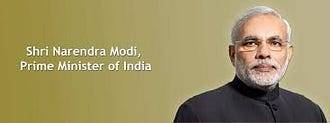
3. Legacy and Enduring Impact
Narendra Modi’s influence on Indian politics and governance is indelible. His leadership is characterized by resoluteness, charisma, and an unwavering commitment to development. His ability to connect with the masses through social media and public engagements has solidified his status as a formidable political figure.
As India marches forward into the future, Narendra Modi’s legacy will be defined by his tireless efforts to position the nation as a global economic powerhouse, his emphasis on infrastructure development, and his role in shaping India’s foreign policy. He remains a polarizing figure, evoking passionate support and vocal criticism, a testament to the multifaceted nature of Indian politics.
4. Early Life and Political Ascent
Narendra Damodardas Modi was born on September 17, 1950, in Vadnagar, a quaint town in Gujarat, India. His extraordinary journey from the son of a tea vendor to the Prime Minister of the world’s largest democracy is a testament to his unwavering resolve and relentless dedication. At a young age, Modi joined the Rashtriya Swayamsevak Sangh (RSS), a Hindu nationalist organization, embodying his commitment to public service and national pride.
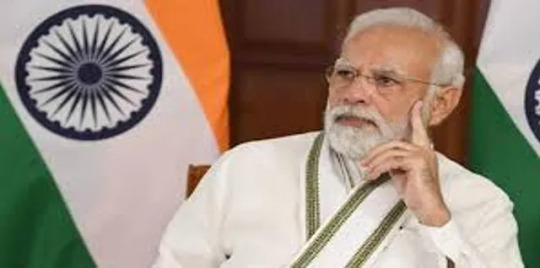
Modi’s political odyssey began in earnest when he became a part of the Bharatiya Janata Party (BJP) in the 1980s. Over the years, he held various party roles and assumed the office of Chief Minister of Gujarat in 2001. His tenure at the helm of Gujarat was marked by remarkable economic growth, infrastructural development, and a focus on efficient governance.
Conclusion
Narendra Modi’s extraordinary journey from humble beginnings to the highest office in India is a testament to his unyielding spirit and astute political acumen. As Prime Minister, he has dedicated himself to ushering in transformative changes across India’s economic, social, and political landscapes. While his tenure has been marked by significant accomplishments, it has also encountered its fair share of trials and tribulations. As India continues its voyage in the 21st century, Narendra Modi remains a central figure in the nation’s political narrative, leaving an indelible imprint on the country he leads.Blaze
0 notes
Text
"Narendra Modi: Charting the Apex of Leadership in India"
Narendra Modi, a name that reverberates with dynamic leadership and visionary governance, has etched his name in the annals of Indian political history. As the 14th Prime Minister of India, he has played a pivotal role in shaping the nation’s trajectory. This blog delves into the life, political journey, and transformative impact of Narendra Modi on India.
1. Prime Ministership: A New Era
In 2014, Narendra Modi steered the BJP to a resounding victory in the general elections, securing an absolute majority in the Lok Sabha (India’s lower house of Parliament). His campaign, centered on the promise of “Achhe Din” (Good Days), struck a chord with a diverse cross-section of the Indian populace. On May 26, 2014, Modi was sworn in as the Prime Minister of India.
Under Modi’s leadership, India has witnessed sweeping transformations and noteworthy progress across various sectors:
Economic Reforms: The Modi government introduced a series of groundbreaking economic reforms, including the “Make in India” campaign aimed at boosting domestic manufacturing, “Digital India” to foster technological advancement, and “Startup India” to nurture entrepreneurship.
Global Outreach: Modi emerged as a prominent figure on the international stage, cultivating robust ties with major world powers and neighboring nations. His “Neighborhood First” policy and efforts to bolster relations with countries like the United States and Israel have garnered global attention.
Infrastructure Overhaul: The government embarked on an ambitious journey to revamp India’s infrastructure. Projects encompassed the construction of extensive road networks, modernization of railways, and the “Smart Cities” initiative to build sustainable urban centers.
Financial Inclusion: The “Pradhan Mantri Jan Dhan Yojana” aimed at bringing financial services to the unbanked, providing millions with access to banking facilities. The “Pradhan Mantri Mudra Yojana” empowered small business owners by offering financial support.
Clean India Campaign: The “Swachh Bharat Abhiyan” became a nationwide mission for a cleaner and more hygienic India, with citizens actively participating in cleanliness drives.
Digital Revolution: India’s digital landscape experienced a profound transformation under Modi’s guidance, with a focus on expanding internet connectivity and promoting digital services to the farthest corners of the nation.
2. Challenges and Controversies
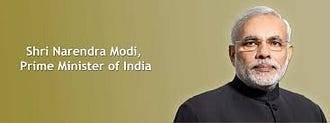
3. Legacy and Enduring Impact
Narendra Modi’s influence on Indian politics and governance is indelible. His leadership is characterized by resoluteness, charisma, and an unwavering commitment to development. His ability to connect with the masses through social media and public engagements has solidified his status as a formidable political figure.
As India marches forward into the future, Narendra Modi’s legacy will be defined by his tireless efforts to position the nation as a global economic powerhouse, his emphasis on infrastructure development, and his role in shaping India’s foreign policy. He remains a polarizing figure, evoking passionate support and vocal criticism, a testament to the multifaceted nature of Indian politics.
4. Early Life and Political Ascent
Narendra Damodardas Modi was born on September 17, 1950, in Vadnagar, a quaint town in Gujarat, India. His extraordinary journey from the son of a tea vendor to the Prime Minister of the world’s largest democracy is a testament to his unwavering resolve and relentless dedication. At a young age, Modi joined the Rashtriya Swayamsevak Sangh (RSS), a Hindu nationalist organization, embodying his commitment to public service and national pride.
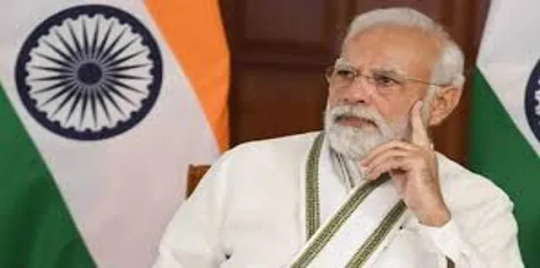
Modi’s political odyssey began in earnest when he became a part of the Bharatiya Janata Party (BJP) in the 1980s. Over the years, he held various party roles and assumed the office of Chief Minister of Gujarat in 2001. His tenure at the helm of Gujarat was marked by remarkable economic growth, infrastructural development, and a focus on efficient governance.
Conclusion
Narendra Modi’s extraordinary journey from humble beginnings to the highest office in India is a testament to his unyielding spirit and astute political acumen. As Prime Minister, he has dedicated himself to ushering in transformative changes across India’s economic, social, and political landscapes. While his tenure has been marked by significant accomplishments, it has also encountered its fair share of trials and tribulations. As India continues its voyage in the 21st century, Narendra Modi remains a central figure in the nation’s political narrative, leaving an indelible imprint on the country he leads.Blaze
0 notes
Text
Narendra Modi ji the Great leader for India
Narendra Modi, a name that reverberates with dynamic leadership and visionary governance, has etched his name in the annals of Indian political history. As the 14th Prime Minister of India, he has played a pivotal role in shaping the nation’s trajectory. This blog delves into the life, political journey, and transformative impact of Narendra Modi on India.
1. Prime Ministership: A New Era
In 2014, Narendra Modi steered the BJP to a resounding victory in the general elections, securing an absolute majority in the Lok Sabha (India’s lower house of Parliament). His campaign, centered on the promise of “Achhe Din” (Good Days), struck a chord with a diverse cross-section of the Indian populace. On May 26, 2014, Modi was sworn in as the Prime Minister of India.
Under Modi’s leadership, India has witnessed sweeping transformations and noteworthy progress across various sectors:
Economic Reforms: The Modi government introduced a series of groundbreaking economic reforms, including the “Make in India” campaign aimed at boosting domestic manufacturing, “Digital India” to foster technological advancement, and “Startup India” to nurture entrepreneurship.
Global Outreach: Modi emerged as a prominent figure on the international stage, cultivating robust ties with major world powers and neighboring nations. His “Neighborhood First” policy and efforts to bolster relations with countries like the United States and Israel have garnered global attention.
Infrastructure Overhaul: The government embarked on an ambitious journey to revamp India’s infrastructure. Projects encompassed the construction of extensive road networks, modernization of railways, and the “Smart Cities” initiative to build sustainable urban centers.
Financial Inclusion: The “Pradhan Mantri Jan Dhan Yojana” aimed at bringing financial services to the unbanked, providing millions with access to banking facilities. The “Pradhan Mantri Mudra Yojana” empowered small business owners by offering financial support.
Clean India Campaign: The “Swachh Bharat Abhiyan” became a nationwide mission for a cleaner and more hygienic India, with citizens actively participating in cleanliness drives.
Digital Revolution: India’s digital landscape experienced a profound transformation under Modi’s guidance, with a focus on expanding internet connectivity and promoting digital services to the farthest corners of the nation.
2. Challenges and Controversies
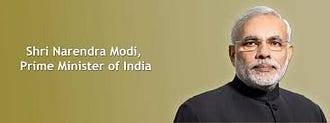
3. Legacy and Enduring Impact
Narendra Modi’s influence on Indian politics and governance is indelible. His leadership is characterized by resoluteness, charisma, and an unwavering commitment to development. His ability to connect with the masses through social media and public engagements has solidified his status as a formidable political figure.
As India marches forward into the future, Narendra Modi’s legacy will be defined by his tireless efforts to position the nation as a global economic powerhouse, his emphasis on infrastructure development, and his role in shaping India’s foreign policy. He remains a polarizing figure, evoking passionate support and vocal criticism, a testament to the multifaceted nature of Indian politics.
4. Early Life and Political Ascent
Narendra Damodardas Modi was born on September 17, 1950, in Vadnagar, a quaint town in Gujarat, India. His extraordinary journey from the son of a tea vendor to the Prime Minister of the world’s largest democracy is a testament to his unwavering resolve and relentless dedication. At a young age, Modi joined the Rashtriya Swayamsevak Sangh (RSS), a Hindu nationalist organization, embodying his commitment to public service and national pride.
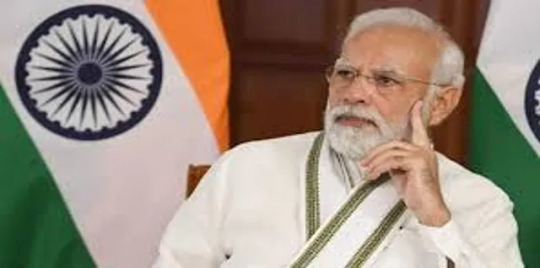
Modi’s political odyssey began in earnest when he became a part of the Bharatiya Janata Party (BJP) in the 1980s. Over the years, he held various party roles and assumed the office of Chief Minister of Gujarat in 2001. His tenure at the helm of Gujarat was marked by remarkable economic growth, infrastructural development, and a focus on efficient governance.
Conclusion
Narendra Modi’s extraordinary journey from humble beginnings to the highest office in India is a testament to his unyielding spirit and astute political acumen. As Prime Minister, he has dedicated himself to ushering in transformative changes across India’s economic, social, and political landscapes. While his tenure has been marked by significant accomplishments, it has also encountered its fair share of trials and tribulations. As India continues its voyage in the 21st century, Narendra Modi remains a central figure in the nation’s political narrative, leaving an indelible imprint on the country he leads.
0 notes
Text
PM Modi Report Card From Last 10 Years Pros And Cons
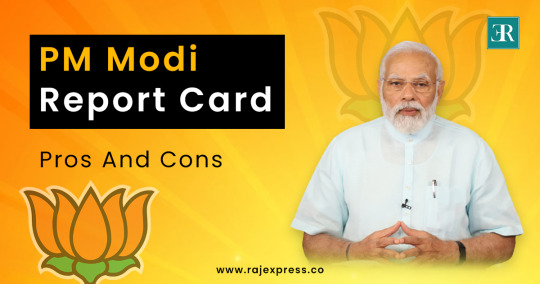
India news - A comprehensive "report card" for any political leader, including Prime Minister Narendra Modi, would require a detailed analysis across various sectors and policies over a 10-year period. As of my last knowledge update in January 2022, I can provide a general overview of some of the key achievements and challenges during his tenure:
Pros:
Swachh Bharat Abhiyan (Clean India Campaign):
This nationwide initiative successfully addressed sanitation issues and garnered support for cleanliness warriors.
Jan Dhan Yojana (Financial Inclusion Scheme):
It significantly increased financial inclusion by providing bank accounts to the unbanked population.
Make in India:
This program aimed to boost domestic manufacturing and position India as a global manufacturing hub.
Digital India:
The government enhanced digital infrastructure and expanded internet access while digitalizing government services.
Pradhan Mantri Awas Yojana (PMAY - Housing for All):
This scheme aimed to provide affordable housing to economically disadvantaged citizens.
Goods and Services Tax (GST):
The introduction of GST simplified the tax structure and streamlined the taxation system.
Ayushman Bharat:
This health insurance program offered financial protection against high medical expenses to millions of families.
Surgical Strikes:
The successful surgical strikes in 2016 demonstrated India's response to terrorist threats.
Ujjwala Yojana:
Providing gas cylinders to poor women improved their living conditions.
Startup India:
This initiative encouraged entrepreneurship and supported innovative companies.
Cons:
Employment:
Concerns have arisen over job creation, with some believing that the government hasn't adequately addressed unemployment issues.
Farmers' Issues:
The government faced protests and criticism regarding the farm bills, leading to concerns about the agricultural sector.
COVID-19 Management:
Some have questioned the government's handling of the COVID-19 pandemic, particularly during the second wave.
Economy:
Economic growth rates and job creation have been areas of concern for some during Modi's tenure.
Foreign Policy:
Relations with neighboring countries, especially Pakistan and China, have faced challenges.
Inter-State Conflicts:
Disputes between states and between central and state governments have presented difficulties to resolve.
Social Issues:
Political News In Hindi, Debates and controversies related to social issues, such as religious tensions and freedom of expression, have emerged.
It's important to recognize that assessing a leader's performance is subjective, and opinions on Prime Minister Modi's tenure differ among various segments of the population. A comprehensive evaluation would necessitate an in-depth analysis of various sectors and policies, hindi news.
#india news in hindi#India news#hindi news#hindi samachar#news in hindi#latest news in hindi#latest india news in hindi#breaking news in hindi#breaking news from india in hindi#news from india in hindi#top india headlines in hindi#headlines in hindi#news features in hindi#news videos in hindi
0 notes
Text
Exploring the Complex Realities of Modi's New India
The idea of New India has generated a lot of debate in a world that is becoming more and more connected via digital and physical channels. The largest democracy in the world's social, political, and economic landscapes are being reshaped by the Modi government, which is headed by Prime Minister Narendra Modi.
The Vision of New India
At the heart of Prime Minister Modi's vision for New India lies the idea of a progressive, economically robust, and globally influential nation. This vision encompasses several key pillars:
1. Economic Growth and Development
Economic growth is a top priority for the Modi administration, which wants to grow India's economy to $5 trillion by 2024. This lofty objective sees a country where there is a thriving entrepreneurial ecosystem, job growth, and poverty reduction.
2. Digital India
The “Digital India” campaign is the cornerstone of the government's initiative, which aims to digitize various sectors, increase connectivity and promote e-governance. It has made it easier for millions of Indians to access education, health care and government services.
3. Infrastructure and Connectivity
Large-scale infrastructure development projects, including construction of highways, railways and airports, have been undertaken to improve connectivity and promote trade and tourism.
4. Social Welfare
Programs like "Pradhan Mantri Awas Yojana" and "Ayushman Bharat" have been introduced to address social inequalities by offering the poor access to affordable housing and healthcare.
Successes of Modi's New India
The journey of transforming India has seen numerous successes, which have garnered global recognition:
1. Ease of Doing Business
Due to a significant improvement in India's ranking in the World Bank's Ease of Doing Business Index, the country is now more appealing to foreign investors and businesspeople.
2. Rural Electrification
The "Saubhagya Yojana" of the government improved the quality of life for millions by achieving 100% electrification in rural areas.
3. Financial Inclusion
The Jan Dhan Yojana initiative, which sought to give financial access to all citizens, played a significant role in raising the nation's bank account ratio.
4. International Diplomacy
Prime Minister Modi's diplomacy has strengthened India's ties with key global players, positioning the country as a leading global voice.
Challenges and Concerns
While New India has witnessed remarkable progress, it is not without its share of challenges:
1. Unemployment
Despite economic growth, unemployment remains a concern, particularly among the youth.
2. Income Disparities
The economic boom has led to income disparities, with urban areas benefiting more than rural regions.
3. Environmental Concerns
Rapid industrialization and urbanization have increased environmental concerns such as air pollution and deforestation.
4. Social Divides
India's diverse cultural and religious landscape has led to some social tensions and divides.
The Future of New India
The future of the country is still being shaped by Prime Minister Modi's ongoing quest for a "New India." It is crucial to address the challenges while building on the successes achieved as India navigates the complexity of the twenty-first century.
In conclusion, "Exploring the Complex Realities of Modi's New India" reveals a nation in transition, where progress is undeniable yet challenges persist. The government's commitment to economic growth, digitalization, infrastructure development, and social welfare is propelling India onto the global stage. However, addressing unemployment, income disparities, environmental concerns, and social divides remains imperative.
The future of the new India is an exciting and ever-evolving story that fascinates not only its citizens but the world. As the nation continues to grow and change, it remains a fascinating case study in the complexities and opportunities of the modern world.
1 note
·
View note
Text
Jan Dhan Yojana: Transforming Financial Inclusion in India
In the realm of financial inclusion, where barriers to access and opportunities have persistently impeded progress, India’s Prime Minister Narendra Modi launched the transformative Jan Dhan Yojana. This ambitious initiative stands as a monumental milestone, heralding a new era of financial empowerment for millions of individuals across the nation and setting an unrivaled precedent for the…

View On WordPress
0 notes
Text
Congress Leader Shashi Tharoor Talks About PM Modi's Replacement
In a recent interview, Congress leader Shashi Tharoor was asked who could replace Prime Minister Narendra Modi. Instead of giving a direct answer, he talked about what qualities a leader should have. He said a good leader should be fair, capable, and have a clear plan for the country's future. Tharoor didn't name anyone specific, but his words made people think about what's important in a leader.
Tharoor's comments are important because they come at a time when the Congress party is trying to become stronger. They want to be a strong opposition to the ruling BJP party. Tharoor's words show that the Congress party needs to think about what kind of leader they want and what they stand for.
Tharoor's ideas are not just for the Congress party. They're also important for all political parties in India. As India faces many challenges, leaders need to focus on what's best for the country. Tharoor's message is about looking at bigger issues and not just individual people.
Tharoor's words are a reminder that Indian politics should be about ideas and not just about personalities. He wants people to think about what's important for the country's future. While the search for PM Modi's replacement goes on, Tharoor's ideas make us think about what kind of leadership India needs in the long run.
In conclusion, Shashi Tharoor's comments have sparked a broader conversation about leadership in Indian politics. His emphasis on qualities rather than individuals highlights the importance of substance over symbolism. As political parties strive to address the country's challenges, Tharoor's ideas serve as a valuable guide for shaping a brighter future for India.
A Recap of Key Initiatives and Policies By Prime Minister Narendra Modi -
Prime Minister Narendra Modi has implemented various initiatives and policies aimed at transforming India's socio-economic landscape. His government's flagship programs like Swachh Bharat Abhiyan, Make in India, and Digital India have sought to address pressing issues such as sanitation, economic growth, and digital empowerment.
PM Modi's focus on infrastructure development through projects like the Smart Cities Mission and the Atal Mission for Rejuvenation and Urban Transformation (AMRUT) has aimed to modernize urban areas and improve living standards. Moreover, initiatives like Jan Dhan Yojana, Ayushman Bharat, and Pradhan Mantri Awas Yojana have aimed at financial inclusion, healthcare accessibility, and affordable housing for all sections of society.
PM Modi's tenure has also seen significant foreign policy initiatives, enhancing India's global stature and fostering closer ties with key partners. Overall, PM Modi's leadership has been characterized by a vision for inclusive development, digital transformation, and a stronger India on the global stage.
#werindia#leading india news source#top news stories#top news headlines#national news#indian politics#latest national news#top news of the day#latest politics news#political news
0 notes
Photo

Opening a savings account is now considerably simpler with a Rupay Card under the PMJDY (Prime Minister Jan Dhan Yojana) programme. To receive a RuPay debit card, you would need a basic KYC document that contains your ID and address proof. With our CSP service, there are no hassles, no standing hours, and it is much simpler to get in touch with us for any Banking services. Visit the Top CSP Provider in India, eGovernance.in. online.
0 notes
Text
What is e-Shram Card: 4 Big Benefits (ई-श्रम कार्ड बनवाने पर मिलेंगे यह फायदे)

Photo Source: https://eshram.gov.in
Introduction
Earlier in our article we informed you about the exact ways in which e-labor card can be applied online. In today's article we will tell you exactly what benefits you can get from it. Because this question must be coming to your mind right now. So let's see what kind of help this card will give you. Today's article on this topic- eShram Card 4 Big Benefits. There are many people who made this card in 2000 and there are many people who made this card in 2022 or plan to make it in the future. If you have received this card then you need to know which schemes you can avail benefits from the government if you keep this deduction. Let's go straight to the point.
Benefits from e Shram card
In this context, we need to know that e-Shram card has been made by about two million people so far. And about 18 million people have been targeted to make such cards. So there are plans to make a total of 38 lakh cards. - Varan Poshan Yojana The main thing you will get if you have this card is that you will be included in the maintenance plan or Varan Poshan Yojana. Each person included in this scheme is required to deposit Rs.500 - per month in their bank account. However, it is true that only 9 to 10 percent of people still have this money deposited in their bank accounts. However, it is better to say that if you are a farmer, you will not be included in this scheme. The reason is that you are already benefiting from Kisan Samman Nidhi Yojana. However, only the people of Uttar Pradesh will get the scheme we are talking about. - Accident Bima If you have an e-labor card, you will get another special opportunity. That is, if you have an accident for any reason, you can get a discount of up to Rs 2 lakh at the hospital. Or your family whose names are on the card with you will get that opportunity. - Bikalanga Yojana Another benefit is that if a worker has this card and his limbs are damaged in any way while working, he can get medical expenses up to one lakh rupees. - Pension Plan In addition, if this card is immediately included in the Prime Minister's Jan Dhan Yojana, you will get a pension of Rs. 3000 per month from the age of 60. However, in this case, you must include the Prime Minister's Mandhan Yojana. Latest Posts https://www.youtube.com/watch?v=ekHyZ61rClU
Conclusion
So far no one was able to send in the perfect solution, which is not strange. However, according to official data, several more beneficial schemes are to be covered in the future. You will begin to reap the benefits of the scheme whenever it is covered. So register your name to cut without delay and keep taking advantage shots.
FAQs
Is e Shram card free? There are no fees required for the e-registration for the e-shram card. What is the purpose of e Shram card? Workers who successfully register for the e-Shram Portal will receive an eShram Card. The government introduced the e-Shram platform in August 2021 to improve the implementation of different social security policies for unorganised sector workers. Can a student make e Shram card? What is the Minimum Eligibility? All students must be permanent residents of India, and applicants must be between the ages of 15 and 59. For E Shram Card Apply Online Self Registration 2022, the student's age must be greater than 59. Can e Shram card can be cancelled? To cancel the e Shram card, you need to call the Helpdesk No. Call 14434 and talk to the customer care officer. How do I check my e Shram card balance? You must first check the status of your instalment at the bank, or you can phone the bank's toll-free number from your home and get complete information. Read the full article
1 note
·
View note
Text
PM Modi's speech in RS: Check out top quotes
India oi-Prakash KL | Updated: Thursday, February 9, 2023, 17:53 [IST] New Delhi, Feb 09: Prime Minister Narendra Modi on Thursday replied to the motion of thanks on the President’s address to Parliament in the Rajya Sabha. He spoke at length about how his government has been carrying out various developmental schemes for the welfare of the public. From Jan Dhan Yojana to LPG connections, he…

View On WordPress
0 notes